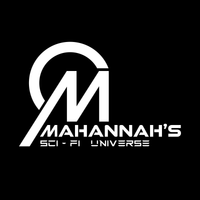
The U.S.S Enterprise NCC-1701-D
"Let's Make Sure History Never Forgets The Name Enterprise..." Jean-Luc Picard-2366
"For five hundred years, every ship that has borne the name of the Enterprise has become a legend. This one is no different."
– Vice Admiral Nakamura, 2365
The flagship of the Federation,the U.S.S Enterprise-D was constructed in 2362 at the Utopia Planitia Shipyards over Mars and commissioned on February 2363 from the Utopia Planitia Shipyards over Mars. The construction was a massive undertaking, involving thousands of people across many disciplines. On stardate 40759.5, in the year 2363, the Enterprise-D was launched from Mars. Final systems completion and shakedown was conducted at Earth Station Mckinley and Captain Jean-Luc Picard took command of the ship on stardate 41148 at the order of Rear Admiral Norah Satie.
Technical capabilities...
Saucer separation
The saucer of the Galaxy-class Enterprise can separate from the stardrive section, a feature used sometimes to evacuate its civilian and non essential personnel in emergencies or when the stardrive section goes into combat, for the additional combat advantage of having two vessels instead of one,
Command
The main bridge of the Galaxy-class Enterprise is on Deck 1. The Enterprise also has a secondary battle bridge on Deck 8 of the secondary hull, for use when the saucer separates.
Tactical
The Galaxy-class Enterprise is armed with twelve Type-X phaser arrays and three photon torpedo launchers, each capable of firing 10 torpedoes at a time. One phaser array is mounted on the "cobra head" of the secondary hull while a photon torpedo launcher is mounted on the ventral aft of the saucer; both are inoperative while the saucer and stardrive sections are docked.The ship also has a high-capacity shield grid and,at least 250 photon torpedoes.
Transportation
The Galaxy-class Enterprise has at least eight transporter rooms and 20 transporter systems. The ship has one large main shuttle bay in the saucer section, supported by two smaller bays in the stardrive section. The ship carries a variety of shuttlecraft and a captain's yacht (according to Patrick Stewart, the yacht is named Calypso, after Jacques Cousteau's research vessel,and is visible on the underside of the Enterprise saucer,
Medical and life support systems
Biobeds in sickbay
The Galaxy-class Enterprise includes a sickbay and a number of labs and other medical facilities. The shuttlebays, cargo bays, and other areas of the ship can be converted into triage wards. Other areas, such as Ten Forward, can serve as emergency shelters.
Crew support
Saucer section officer's quarters
Various Next Generation episodes show that the Galaxy-class Enterprise has amenities such as holodecks, an arboretum, a school, a gymnasium, amphitheaters, and a bar called 10 Forward. Several Enterprise crew members' civilian family members (including children) are aboard even though the Enterprise routinely faces situations that could easily end with the complete destruction of the ship with all hands. Some civilians also work aboard the ship.
Class and type: Galaxy Class Starship
Displacement: 4,500,000 metric tons (4,400,000 LT)
Length: 642.5 metres (2,108 ft)
Beam: 463.73 metres (1,521.4 ft)
Height: 195.26 metres (640.6 ft)
Propulsion:
Galaxy Class matter/antimatter warp drive
2 x warp nacelles
3 x fusion impulse engines
Speed: Initial average cruising Warp 6, emergency speed: Warp 9.6 for 12 hours, max theoretical speed: Warp 9.8
Range: 15 years
Complement: 1,012 Officers, enlisted, scientists & civilian family members
Sensors and
processing systems: Galaxy class computer core
Armament:
12 Phaser arrays
2 Torpedo launchers
250 Photon, Gravimetric, or Tricobalt torpedoes carried
Antimatter mines
Armor: Deflector shields
After 9 years of remarkable service, while on a critical mission in 2371, the Klingon Duras sisters obtained the phase modulation frequency of the Enterprise-D's shields over the planet Veridian III, rendering them useless. Although the Enterprise-D destroyed the sisters' ship, damage to the warp drive coolant system prompted an emergency saucer separation The warp core breached moments after the saucer began to move away, destroying the ship's stardrive section. The resulting shock wave disabled the saucer's propulsion and other primary systems, sending it into Veridian III's atmosphere. Caught in the planet's gravity, the saucer section crash landed on the surface, damaged presumably beyond repair. The saucer section was salvaged by a small fleet of Starfleet ships that rescued the stranded crew and cleared all evidence of the Veridian III incident per the Prime Directive. Over the next 20 plus years, the Enterprise D was slowly restored by Commodore Geordie Laforge as a hobby project, where he replaced the destroyed star drive with the star drive of another Galaxy class starship (the USS Syracuse) and restored the Enterprise D to it's original operating condition
The U.S.S Enterprise NCC 1701-D was officially retired to the fleet museum at Athan Prime and replaced by future ships carrying the name Enterprise.
